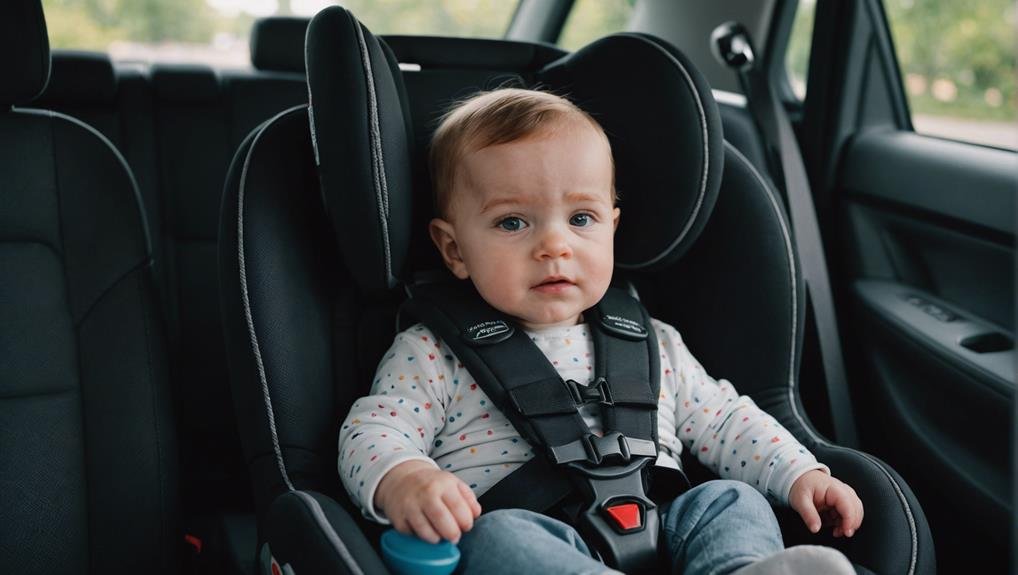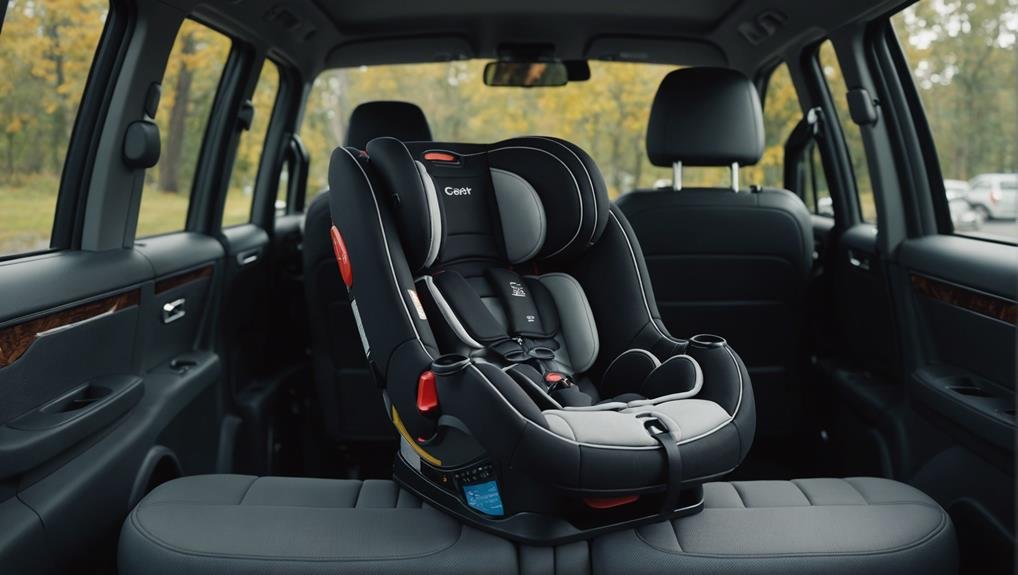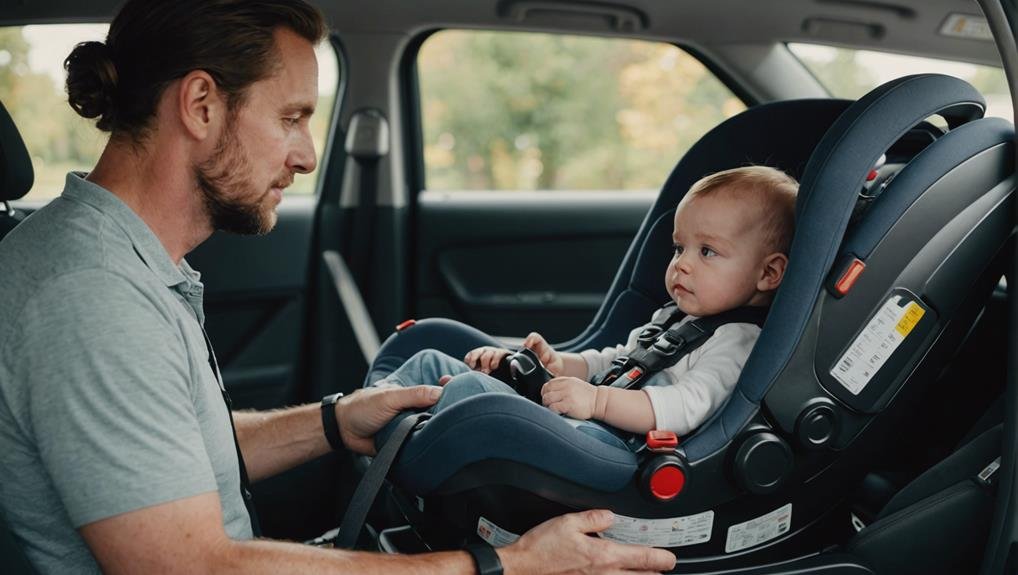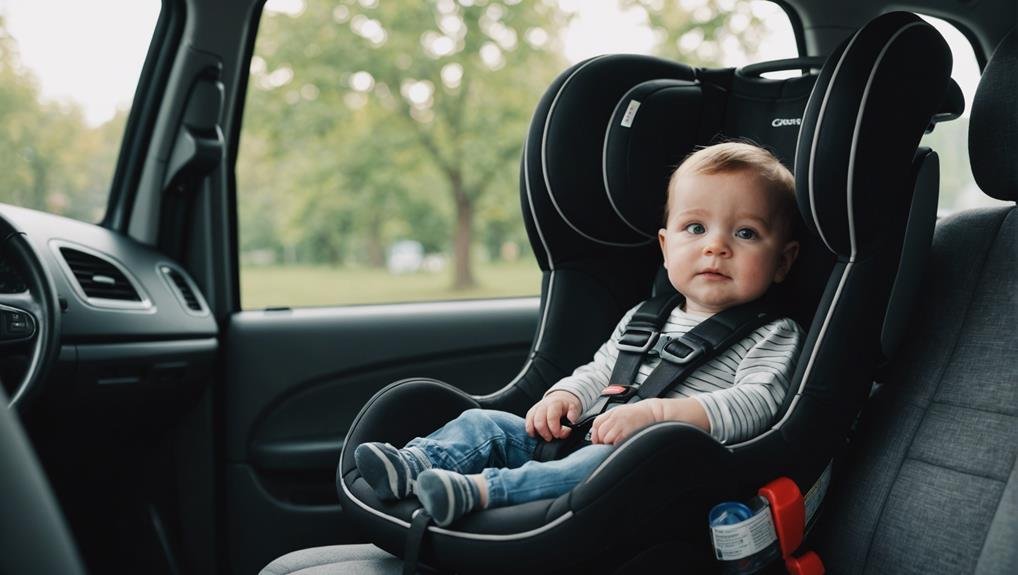"Cherishing Little Steps - A Haven for Baby and Family Journeys"
Baby Car Seat
When it comes to keeping your little one safe on the road, a baby car seat is your trusty shield against unforeseen dangers. But do you know all the essential tips and tricks to ensure your child's utmost protection? From selecting the right type to mastering the correct installation technique, there's a whole world of knowledge waiting to be uncovered. So, are you truly equipped with everything you need to secure your precious cargo during every journey?
Importance of Baby Car Seats

Using a baby car seat is crucial for ensuring the safety of your child while traveling in a vehicle. Car seat safety is a top priority when it comes to child passenger safety. These specially designed seats provide vital protection in the event of a crash, significantly reducing the risk of injury or death. By securely fastening your child in a car seat, you create a shield against potential hazards on the road.
Child passenger safety isn't something to take lightly. Properly installed car seats can mean the difference between a minor incident and a catastrophic outcome.
Always follow the manufacturer's guidelines for installing and using the car seat correctly. Remember, the goal is to keep your child safe and secure during every car ride.
Types of Baby Car Seats
When selecting a baby car seat, it's essential to consider the various types available to ensure the best fit for your child's safety and comfort.
Infant carriers are designed for newborns and typically have a removable carrier that can be used outside the car.
Convertible seats offer both rear-facing and forward-facing options, allowing for extended use as your child grows.
Booster seats are crucial for older children who've outgrown their forward-facing seats, providing the necessary elevation for the seat belt to fit correctly.
Additionally, travel systems combine a car seat with a stroller, offering convenience when on the go.
Infant carriers are ideal for newborns due to their portability and convenience.
Convertible seats adapt to your child's growth stages, accommodating them for a more extended period.
Booster seats elevate older children for proper seat belt positioning.
Travel systems provide a seamless transition from car to stroller, making travel easier and more efficient.
Consider the specific needs of your child and your lifestyle when choosing the right type of baby car seat for optimal safety and comfort.
Rear-Facing Vs. Forward-Facing

Consider the safety benefits of rear-facing versus forward-facing baby car seats to make an informed decision for your child's protection.
Safety research and crash tests consistently show that rear-facing car seats provide superior protection for infants and toddlers. In a collision, rear-facing seats distribute the crash forces across the child's entire body, significantly reducing the risk of head, neck, and spinal injuries. This design is especially crucial for young children whose necks and spines are still developing.
When it comes to developmental concerns, experts recommend keeping children in rear-facing seats for as long as possible, typically until they reach the height or weight limit specified by the car seat manufacturer. Transitioning to a forward-facing seat prematurely can expose your child to increased injury risks in case of an accident. Therefore, it's essential to adhere to age limits and guidelines to ensure optimal safety for your little one.
Always prioritize your child's safety over convenience when choosing between rear-facing and forward-facing car seats.
Choosing the Right Fit
Selecting the appropriate baby car seat size is crucial to ensure a secure and snug fit for your child's safety during car rides. When choosing the right fit, consider the safety features and weight limits of the car seat. Safety features such as side-impact protection, a five-point harness system, and energy-absorbing foam are essential for maximum protection in case of an accident. Weight limits play a significant role in ensuring that your child is adequately supported by the car seat.
To help you understand better, here is a table outlining some common safety features and weight limits to look for in a baby car seat:
| Safety Features | Weight Limits |
|---|---|
| Side-impact protection | Up to 35 pounds |
| Five-point harness | 4 to 65 pounds |
| Energy-absorbing foam | Up to 120 pounds |
| Adjustable headrest | 5 to 65 pounds |
| Recline positions | 5 to 40 pounds |
Installation Tips and Tricks

Ensure a secure and proper installation of your baby car seat by following these essential tips and tricks.
When installing your baby car seat, always refer to the manufacturer's instructions to guarantee a correct fit. Make sure to utilize all safety features provided, such as the LATCH system or seatbelt, and adjust the recline angle according to your child's age and size.
One common installation challenge is achieving a tight fit without any wobbling or movement. To address this, put your weight into the seat as you tighten the straps or latch system. Additionally, check for any twists or tangles in the straps and adjust them accordingly to ensure a snug fit.
Remember to consult with a certified Child Passenger Safety Technician if you encounter any difficulties during the installation process. By paying close attention to these installation tips and tricks, you can provide your little one with a safe and secure ride every time you hit the road.
Adjusting Straps and Buckles
When adjusting the straps and buckles on your baby car seat, ensure they fit snugly and securely around your child to maintain their safety during car rides.
Proper positioning of the straps is crucial. Start by adjusting the straps at or below your baby's shoulders for rear-facing seats, or at or above the shoulders for forward-facing seats. Make sure the straps lie flat without twists to ensure maximum effectiveness.
Check the strap tightness by ensuring you can slide only one finger underneath the harness at your baby's chest. If the straps are too loose, they won't provide adequate protection in case of a sudden stop or collision.
Buckle up your little one and then check if the harness is snug by pinching the strap near the shoulders. If you can pinch excess webbing, tighten the straps until they're snug against your baby's body.
Safety Guidelines for Parents

To ensure the safety of your child while using a baby car seat, it's essential to familiarize yourself with specific safety guidelines as a parent. Start by checking for safety certifications on the car seat to ensure it meets the necessary standards for protection. Proper installation is crucial; always refer to the manufacturer's instructions and make sure the seat is securely installed in your vehicle.
Next, consider age and weight requirements. Ensure that your child fits within the specified range for the car seat. Proper buckling is key to your child's safety. Double-check that the harness is snug and secure, with no twists or slack. The chest clip should be at armpit level to keep the straps in the correct position.
Following these safety guidelines diligently will help safeguard your child during car rides.
Cleaning and Maintenance
Regularly inspecting and cleaning your baby car seat is crucial to maintaining its safety and effectiveness. Stain removal is essential in keeping the seat looking fresh and hygienic. For fabric covers, spot clean with a mild detergent and warm water, then allow to air dry completely. Disinfecting is equally important; use a solution of water and white vinegar to sanitize the hard surfaces regularly. Ensure all parts are dry before reassembling.
When not in use, consider storage solutions that protect the car seat and enhance its longevity. Store the seat in a cool, dry place away from direct sunlight to prevent any damage to the materials. Avoid leaving it in extreme temperatures, as this can weaken the seat's structure over time. Additionally, keep the seat covered with a cloth or bag to shield it from dust and potential spills.
Traveling With Baby Car Seats

Maintaining the safety and integrity of your baby car seat while traveling is paramount to ensuring your child's protection on the road. When it comes to airplane travel, bringing your car seat onboard offers the best protection for your little one. Most airlines allow the use of FAA-approved car seats during flights, providing a familiar and safe environment for your child.
For road trips or when renting a car at your destination, it's crucial to properly install the car seat. Take the time to read both the car seat manual and the vehicle's manual to ensure a secure fit. If you're renting a car, ask the rental company for assistance with installing the seat correctly.
Safety should never be compromised, no matter where your travels take you.
Common Mistakes to Avoid
Ensure proper installation of your baby car seat by avoiding these common mistakes to promote your child's safety on the road.
When installing the seat, one of the most frequent errors isn't securing it tightly enough. Make sure the seat is firmly attached to the vehicle to prevent excessive movement during sudden stops or collisions.
Additionally, many caregivers overlook the recline angle of the car seat. Ensure that the seat is at the correct angle to support your baby's head and neck properly.
Another common mistake is transitioning your child to the next car seat stage too early. Follow the manufacturer's guidelines regarding weight and height limits to determine when it's time to switch seats.
Moreover, incorrect usage of the harness system is a prevalent error. Ensure that the straps are snug and positioned at the correct height to keep your child secure in the event of a crash.
Frequently Asked Questions
Can Baby Car Seats Be Used on Airplanes?
Yes, baby car seats can be used on airplanes for added safety. They are compatible with strollers, making travel easier. Ensure your seat is FAA-approved and fits airline regulations to keep your little one secure.
What Is the Weight Limit for Baby Car Seats?
When it comes to car seat safety, understanding weight limits is crucial. Always check the manufacturer's guidelines for installation and weight restrictions. Exceeding these limits can compromise the effectiveness of the car seat in protecting your child.
Are There Any Regulations on Car Seat Accessories?
When it comes to car seat accessories, regulations exist to ensure safety. Always follow safety precautions provided by the manufacturer. Avoid aftermarket add-ons that could compromise the integrity of the car seat or hinder its performance.
How Often Should Baby Car Seats Be Replaced?
You should replace baby car seats according to safety standards and manufacturer recommendations. It's crucial to ensure your little one's safety. Stay updated on guidelines and replace when necessary to provide optimal protection.
Can Baby Car Seats Be Used in Rideshare Vehicles?
When using rideshare services, car seat alternatives can be utilized, but always prioritize safety concerns. Ensure the seat is appropriate for your child's age, weight, and height to guarantee a secure and comfortable ride.
Conclusion
In conclusion, choosing the right baby car seat is as important as selecting the perfect helmet for a bike ride. Ensure your child's safety by following safety guidelines, proper installation, and regular maintenance.
Remember, the right fit and correct usage can make all the difference in protecting your little one during travel. Stay informed, stay safe, and make your child's journey as secure as possible.




